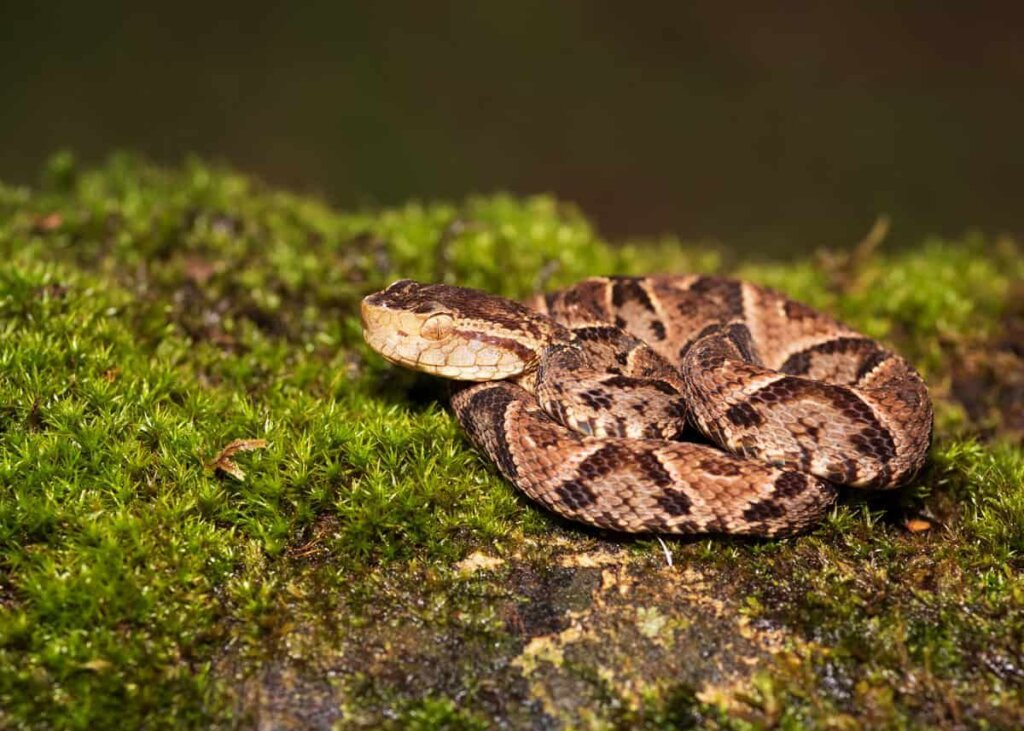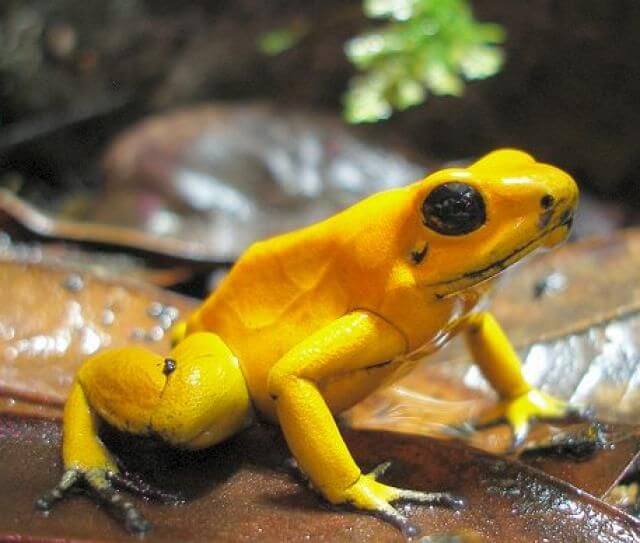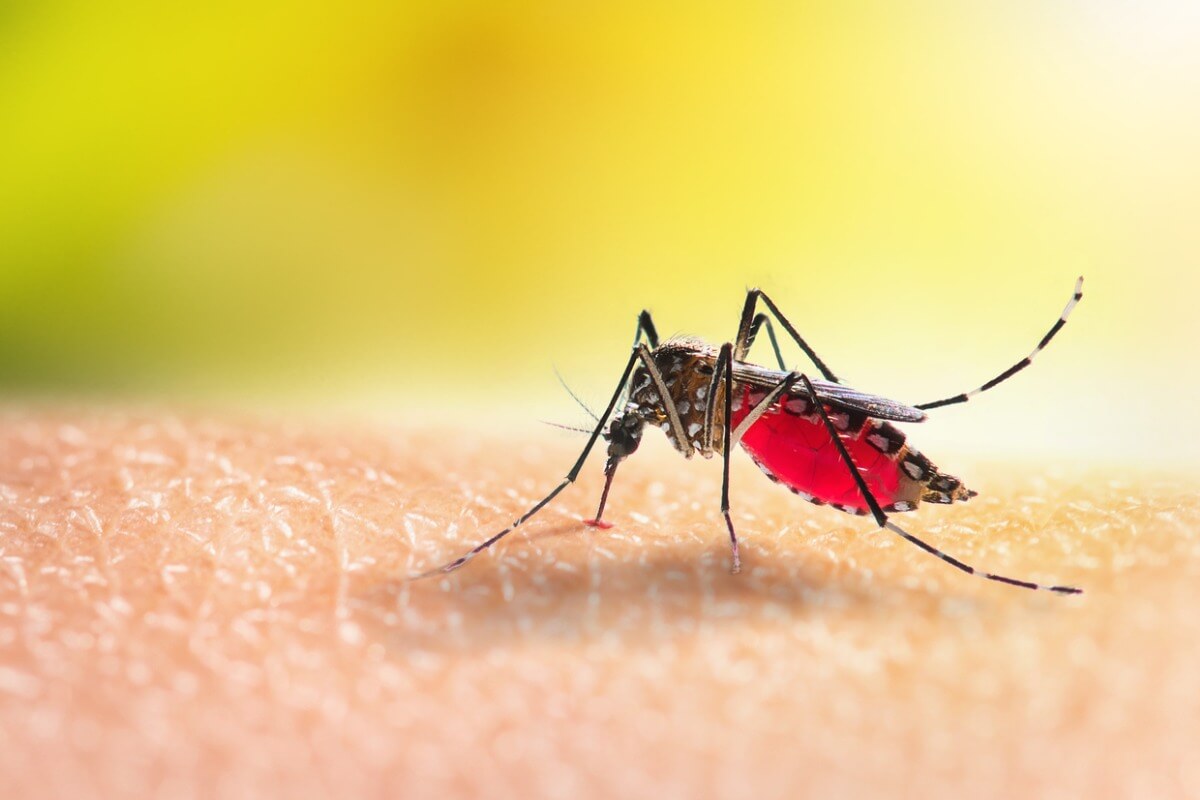The Most Dangerous Animals in Latin America

Latin America is home to approximately 60% of the world’s terrestrial and aquatic animals. Countries such as Brazil and Colombia account for 15% and 10% of the world’s biodiversity, respectively. Although in some areas there are still unidentified species, as in the case of the Amazon, certain animals are known to represent a real threat to a person’s life. In the following article, we’ll show you the most dangerous animals in Latin America, classified as such by the number of human deaths they cause in a year.
1. Most dangerous animals in Latin America: The Brazilian wandering spider
This genus of arachnids, also known as Phoneutria, comprises 8 different species, and are considered one of the most venomous spiders in the world, and thus one of the most dangerous animals in Latin America.
According to several investigations, it has been determined that some species can kill a small mammal with as little as 0.006 mg of their neurotoxin. The only good thing here is that they don’t seem to be very good at injecting their venom!
They’re also rather large, reaching lengths of up to 17 cm (nearly 7 inches). They’re characterized by their aggressive temperament, as they tend to be quite hostile to any threat.
Their diet is based on reptiles, amphibians, and insects, although they can even hunt some mammals such as mice. They’re found in jungle areas of South America, in countries such as Brazil, Colombia, Peru and Venezuela.
2. Anaconda
Cataloged as the largest snake in the world, this magnificent animal can measure more than 10 meters (33 feet) in length and reach weights of more than 2 tons (4500 pounds). Although it has no venom, this snake hunts its prey by means of the constriction method. This consists of suffocating and pressing on the rib cage of its prey until it suffocates it. It’s a carnivore, including large and small mammals, birds and other reptiles in its diet.
It swims very well, and prefers to hunt its prey in the water, as it’s a bit slow on land. Although their attacks on humans aren’t instinctive, they are dangerous animals, as there have been reported cases in which they have devoured a person completely. They generally inhabit tropical jungles, swamps and savannahs in countries such as Venezuela, Brazil and Colombia.
3. Bull shark (Carcharhinus leucas)
The bull shark is found in all tropical waters of the planet. In Latin America, it can be found in the Amazon, in Lake Cocibolca, in Costa Rica, and in the Atlantic, from the Antilles, Colombia, and Venezuela to Brazil.
This shark can be light or dark gray in color, lightening to white on its belly. There are reports of encounters with bull sharks with a length of four meters (13 feet), and weighing over 300 kilograms (660 pounds).
Its behavior is aggressive and it’s an active hunter. It feeds on fish or other animals such as dolphins, turtles, and birds. The bull shark has a peculiarity that makes it unique within its species, which is its ability to enter and remain for long periods of time in freshwater areas. It achieves this thanks to the retention and regulation of salt through specialized glands, the kidneys, and the liver.
They’re considered highly dangerous animals for humans.
4. Killer bee
The appearance of the killer bee in America dates back to the 1950s, when several beekeepers brought queen bees from the African continent to Brazil. This was in order to improve production rates.
The cross between queen bees and domestic bees at that time resulted in a hybrid with genetic information from European honey bees and African bees. This cross resulted in stronger, more resistant, and aggressive insects. Unfortunately, these hybrids escaped and quickly spread throughout the Americas.
These bees tend to attack quickly when disturbed, following their victim up to four hundred meters (0.25 miles) away from their hive. They can be dangerous animals, as their sting can be lethal to a hypersensitive person. And, even in people who aren’t, if they receive enough stings, they could develop an anaphylactic condition and die.
5. Yarará
The Yarará is a medium-sized snake, a highly venomous pit viper, with a robust body that can reach 1.5 meters (5 feet) in length. Its coloration is dark brown with different spots around its body. It’s a nocturnal snake, where it usually hunts small rodents such as mice. It generally inhabits rocky and humid areas, although it can also be found in pastures and plantations.
It’s highly venomous and known to cause a large number of snakebite envenomings in Latin American countries such as Brazil. It’s found mainly in the south of Brazil, as well as in the north of Paraguay and Argentina.
6. American crocodile
The American crocodile is one of the largest reptiles in the animal kingdom, reaching lengths of up to 6 meters (nearly 20 feet) and weights of 500 kilograms (1100 pounds). Its head is narrow and long, with a body protected by hard, light-colored scales. Its diet consists mainly of mammals, birds, and fish.
It’s found in Latin America, mainly in Venezuela and Peru. In other countries of the region its numbers have been reduced due to indiscriminate hunting. This situation has led to the American crocodile being declared an endangered species.
Although few cases of attacks on humans have been reported, encounters with this animal can be dangerous and fatal.
7. Vampire bat
Recognized as the only flying mammal that feeds exclusively on blood, the vampire bat is a small animal with short, rough fur. It has specific morphological adaptations for feeding, such as its flattened snout and specialized teeth.
It’s a nocturnal animal, and during the day it usually takes refuge in empty trunks or caves, forming colonies that can range from 100 to one million individuals. At night it comes out to feed on the blood of vertebrate animals. It has a predilection for the blood of cattle, although it has been reported that it has also fed on chickens in some places.
Its feeding must be constant, as it can die of starvation within 48 hours. This animal is really dangerous for humans, as its bite can transmit fatal diseases such as rabies. It’s found in several areas of Mexico, Chile, Argentina and Uruguay.
8. Assassin bugs
Assassin bugs are insects belonging to the Reduvidae family, which comprises 7000 species of Heteroptera. They have an elongated head, narrow neck, long legs, and a prominent beak. They’re generally 4-40 mm long.
They generally feed on other insects, injecting them with a lethal saliva through their mouth that liquefies their prey inside; they then absorb the resulting liquid. These animals are distributed in most Latin American countries, among pastures and crops.
These small insects can be really dangerous for humans, since their bite is very painful and can produce serious allergic reactions. However, the real risk lies in the transmission of a parasite known as Trypanosoma cruzi, which causes the deadly Chagas disease in humans.
9. Poison dart frog
Poison dart frogs are a family of amphibians containing over 100 species. They’re small, averaging 50 mm (2 inches) in adult stages. Most of them tend to exhibit bright and strong colors, in order to threaten predators, a technique known as aposematic coloration.
They feed mainly on insects such as crickets, ants, or beetles. They’re endemic to Central and South America, with a greater presence in countries such as Colombia and Brazil.
One of the most important poison dart frogs in this family, the golden dart frog, is found in Colombia. Endemic to this country, it inhabits only a small area of rainforest in the region and is considered the most venomous animal on earth, as it can produce enough venom to kill ten adult males.

10. Bothrops asper
Bothrops aspers have a distinctly triangular head. They’re dark gray, green or brown in color. They also have a pattern of spots which is very characteristic of the species: triangles distributed on both sides of their bodies.
Females are usually larger than males, exceeding them by up to 60 centimeters (24 inches) in length in adulthood. They’re distributed mainly in Central and South American countries, inhabiting tropical rainforests, and thorny and tropical deciduous forests.
This snake is considered one of the most venomous within its species, since its aggressive and nervous behavior has caused many bites, and thus qualifies as one of the most dangerous animals in Latin America. This is the case in countries such as Mexico or Costa Rica, where the velvet snake causes more than 50% of the reported snake envenomings.
11. Mosquitoes

With more than 3500 recognized species, mosquitoes, or Culicidae, are one of the most populous families of insects on the planet, as well as being distributed around 4 continents. These small flying insects have a slender body and elongated legs, measuring no more than 15 mm (a little over half an inch) in their adult stage.
Due to their feeding habits, these hematophagous insects are considered to be the greatest danger to human life, as they’re responsible for the death of more than 725,000 people per year, compared to the 50,000 deaths caused by snakes. Its lethality lies in the transmission of diseases through its bite. A mosquito can transmit different pathologies such as malaria, yellow fever, dengue, zika, chikungunya, among other deadly diseases.
All cited sources were thoroughly reviewed by our team to ensure their quality, reliability, currency, and validity. The bibliography of this article was considered reliable and of academic or scientific accuracy.
- Cohnstaedt LW, Alfonso-Parra C. 2018 Highlights of Mosquito and Vector Biology and Control in Latin America. Journal of the American Mosquito Control Association. 2019;35(1):40-6.
- Corrêa Scheffer K, Iamamoto K, Miyuki Asano K, Mori E, Estevez Garcia AI, Achkar SM, et al. Murciélagos hematófagos como reservorios de la rabia. Revista Peruana de Medicina Experimental y Salud Pública. 2014;31(2).
- Drumheller SK, Nestler JH, Hackett Farris CE, Farris SC, Mazzotti FJ. Crocodylus acutus (American crocodile) bite marks on a nest data logger. PeerJ. 2020;8:e8577.
- Gardiner JM, Wiley TR. Escaped bait: Bull shark Carcharhinus leucas with an intentionally attached harness rig. Journal of fish biology. 2021;98(3):891-4.
- Grant T, Bolivar-Garcia W. A new species of Leucostethus (Anura, Dendrobatidae) from Gorgona Island, Colombia. ZooKeys. 2021;1057:185-208.
- Gutierrez JM. Bothrops asper: beauty and peril in the neotropics. Toxicon : official journal of the International Society on Toxinology. 2009;54(7):901-3.
- Gutierrez JM. Preclinical assessment of the neutralizing efficacy of snake antivenoms in Latin America and the Caribbean: A review. Toxicon : official journal of the International Society on Toxinology. 2018;146:138-50.
- Pernal S. Introduction to Apiculture (Apis mellifera). Veterinary Clinics of North America: Food Animal Practice. 2021;37:381-6.
- Rahmani F, Banan Khojasteh SM, Ebrahimi Bakhtavar H, Rahmani F, Shahsavari Nia K, Faridaalaee G. Poisonous Spiders: Bites, Symptoms, and Treatment; an Educational Review. Emerg (Tehran). 2014;2(2):54-8.
- Vivas RJ, Garcia JE, Guhl F, Hernandez C, Velasquez N, Ramirez JD, et al. Systematic review on the biology, ecology, genetic diversity and parasite transmission potential of Panstrongylus geniculatus (Latreille 1811) in Latin America. Memorias do Instituto Oswaldo Cruz. 2021;116:e200528.
- Wang T, Rindom E. The physiological response to digestion in snakes: A feast for the integrative physiologist. Comparative biochemistry and physiology Part A, Molecular & integrative physiology. 2021;254:110891.
